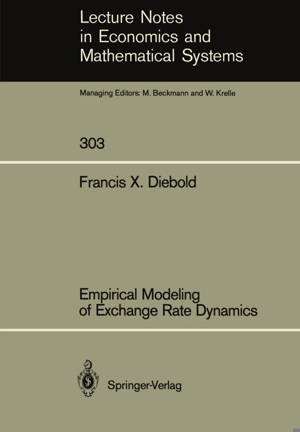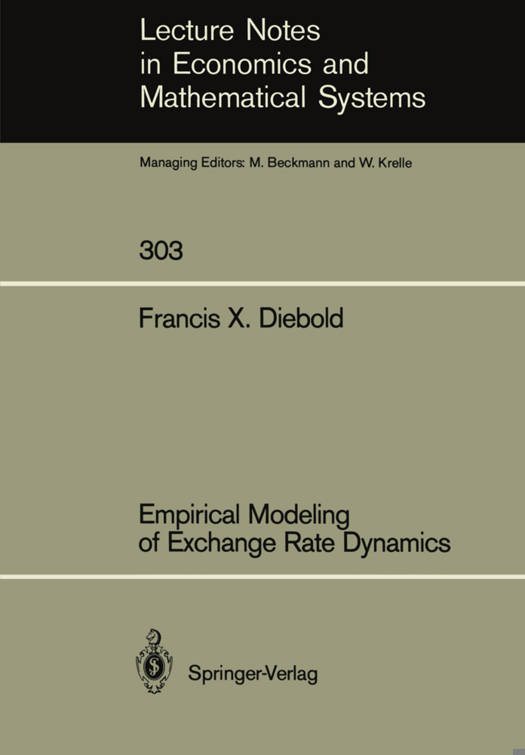
- Afhalen na 1 uur in een winkel met voorraad
- Gratis thuislevering in België vanaf € 30
- Ruim aanbod met 7 miljoen producten
- Afhalen na 1 uur in een winkel met voorraad
- Gratis thuislevering in België vanaf € 30
- Ruim aanbod met 7 miljoen producten
Zoeken
Omschrijving
Structural exchange rate modeling has proven extremely difficult during the recent post-1973 float. The disappointment climaxed with the papers of Meese and Rogoff (1983a, 1983b), who showed that a "naive" random walk model distinctly dominated received theoretical models in terms of predictive performance for the major dollar spot rates. One purpose of this monograph is to seek the reasons for this failure by exploring the temporal behavior of seven major dollar exchange rates using nonstructural time-series methods. The Meese-Rogoff finding does not mean that exchange rates evolve as random walks; rather it simply means that the random walk is a better stochastic approximation than any of their other candidate models. In this monograph, we use optimal model specification techniques, including formal unit root tests which allow for trend, and find that all of the exchange rates studied do in fact evolve as random walks or random walks with drift (to a very close approximation). This result is consistent with efficient asset markets, and provides an explanation for the Meese-Rogoff results. Far more subtle forces are at work, however, which lead to interesting econometric problems and have implications for the measurement of exchange rate volatility and moment structure. It is shown that all exchange rates display substantial conditional heteroskedasticity. A particularly reasonable parameterization of this conditional heteroskedasticity, which captures the observed clustering of prediction error variances, is developed in Chapter 2.
Specificaties
Betrokkenen
- Auteur(s):
- Uitgeverij:
Inhoud
- Aantal bladzijden:
- 143
- Taal:
- Engels
- Reeks:
- Reeksnummer:
- nr. 303
Eigenschappen
- Productcode (EAN):
- 9783540189664
- Verschijningsdatum:
- 9/03/1988
- Uitvoering:
- Paperback
- Formaat:
- Trade paperback (VS)
- Afmetingen:
- 170 mm x 244 mm
- Gewicht:
- 263 g

Alleen bij Standaard Boekhandel
+ 105 punten op je klantenkaart van Standaard Boekhandel
Beoordelingen
We publiceren alleen reviews die voldoen aan de voorwaarden voor reviews. Bekijk onze voorwaarden voor reviews.











